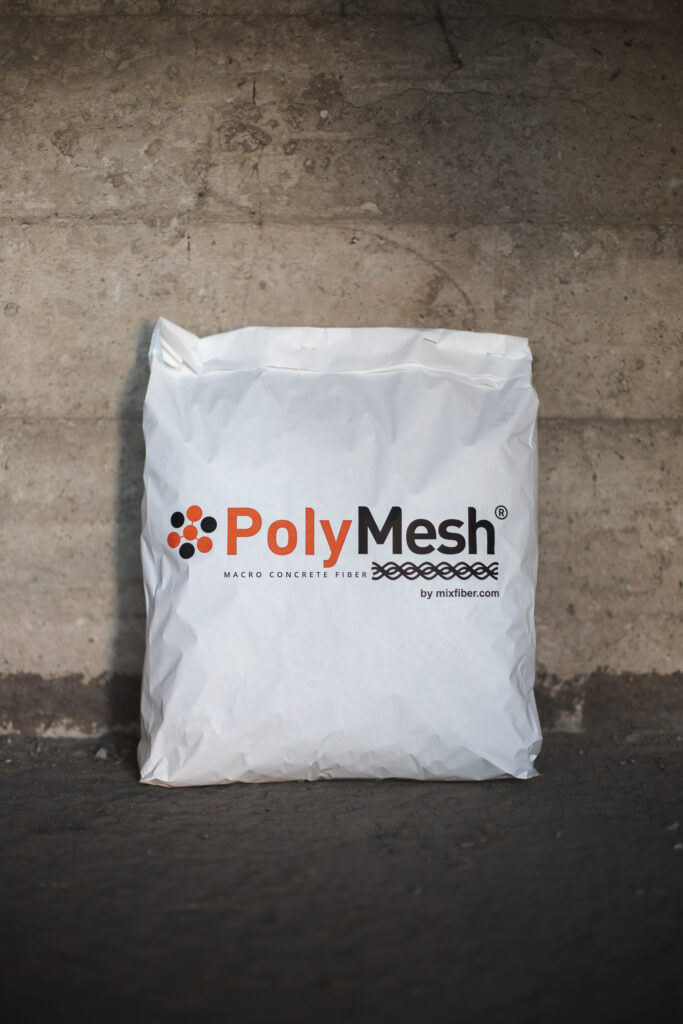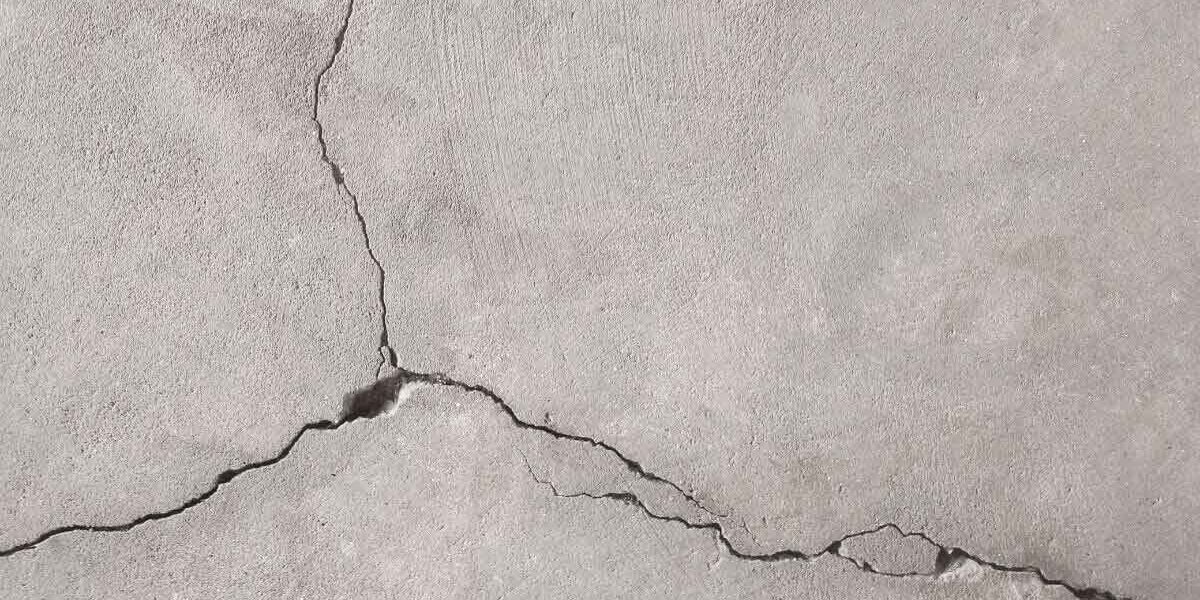Should we reinforce the screed with steel mesh or not? Alternatively, are there any other solutions?
It’s an eternal dilemma whether to reinforce the floor slab concrete or not. My dear friend, Gabi Gulyás – one of the true gurus of screed preparation in Hungary – told me, “Levi, you don’t need a reinforcement mesh in the floor concrete!”
I know it’s not necessary; that is, it’s not a requirement. It’s possible to make a crack-free screed without a reinforcement mesh. It’s just risky.
The standard for the screed specifies a thickness of 6 cm. Unfortunately, this concrete thickness (thinness) carries a lot of risks. Moreover, in many cases, we are forced to make floor concrete with a cross-section even thinner than this.
Floor slab concrete is often made in thicknesses of 4-5 cm (in extreme cases, it may need to go down to 30 mm). I often hear, “there won’t be any serious load, it’s just the floor concrete of a room, and we can’t make it thicker than 4 cm. No need for a reinforcement mesh in the floor concrete.” Okay, but this 4 cm thin screed is placed on an 8 cm thick “load-bearing” insulation. And they don’t consider that in five years, they might bring in a piano here, which could easily weigh up to 400 kg. It stands on three legs, exerting pressure on the floor at 2-4 cm² per leg, with a weight of 133 kg per leg.

A heavier cabinet filled with books or the marital bed where Mom and Dad frolic with their combined weight of 80-100 kilograms also puts a significant load on the floor at a very small point.
Or let’s examine a garage floor. The weight of an average car is typically 1500 kg. The load is transferred at four points: through the car tires. These points have an average surface area of 100-150 cm², so in this case, compared to the piano scenario, only 10 kg is distributed over the 4 cm² surface. However, the car moves around in the garage, thereby exerting pressure on different points of the floor.
Load distribution is one reason why a reinforcement mesh is needed in the floor concrete, but it’s not the only one.
Possibly, with a much simpler method: the floor can also be reinforced with a structural thread.
Gabi was right in that if he or a professional of similar caliber prepares the floor at the prescribed thickness, then a reinforcement mesh is not necessary in the floor concrete. Unfortunately, it is a common scenario that issues arise not only due to the thickness of the concrete but also due to the quality of execution, non-compliance with professional standards, or inadequate material quality. That’s why I say a reinforcement mesh is needed in the floor concrete, but an even better solution is to substitute it with a structural macro-fiber.

The challenges of using reinforcement mesh in concrete.
However, the use of reinforcement mesh significantly complicates the work of floor installers, especially when dealing with a thin cross-section.
You can’t just drop the mesh on the ground and pour concrete over it. Doing so would be pointless and a waste of money. The mesh needs to be positioned in the appropriate place within the concrete cross-section, and for this, spacers are required. Spacers are designed to lift the reinforcing steel so that the concrete can properly surround it, allowing it to exert its beneficial effects: absorbing bending and tensile forces, areas where concrete is particularly weak.
If you lift the mesh in this way, it ends up mostly in the air. However, when the concrete comes, it needs to be traversable. A 4 mm thick mesh with a 150×150 mm grid spacing is not only too thin but also impractical to move on. It bends in all directions before you pour the concrete, and its position in the concrete will not be where you intended. The cost of a grade 5 concrete mesh may be reasonable, but it may not be strong enough. A 6x100x100 mesh can support a fully grown person and won’t bend underneath. The price of grade 8 reinforcement mesh is more attractive based on the number of searches, but it comes with a higher cost. I am not aware of any inexpensive concrete mesh. (As for concrete mesh from OBI? I think we’ll pass on that one 😅)
If you don’t want to hassle with a reinforcement mesh in the floor concrete but still want robust concrete that won’t crack and can withstand heavy loads, then use structural macro-fibers.
Macro fibers can often replace concrete reinforcement mesh, especially when its purpose is load distribution and crack prevention.
Using them comes with several other advantages, besides making the concreting process much simpler compared to using a reinforcement mesh.
- It reinforces the concrete in three dimensions at every single point, while the mesh operates only in one plane.
- It reduces shrinkage cracks to zero. This means that during the concrete curing process, no minor or major cracks can form, resulting in a much more durable concrete in the end.
- It significantly speeds up construction by replacing the work processes associated with concrete reinforcement mesh.
- It ensures workplace safety by eliminating accidents related to the use of reinforcement mesh.
- It is easy to transport. We can replace 500 kg of concrete reinforcement mesh with 25-50 kg of ArmoTeck, which can be delivered to your doorstep by a mail carrier instead of a truck.
- It is easy to work with. You just need to add it to the concrete mixer; no transportation, no loading, no steel installation, no hassle.
- It has almost zero labor requirements.
- It does not corrode. One of the significant drawbacks of reinforced concrete is that over time, the enclosed steel begins to corrode due to acids. Oxygen and moisture reach the steel through tiny microcracks in the concrete, leading to the deterioration of the entire structure. Structural macro-fibers completely eliminate this issue.
- It is easy to drill fiber-reinforced concrete, with no drill breakage.
- It is much cheaper than concrete reinforcement mesh.
- It leaves a much smaller ecological footprint. Its production and transportation contribute only a fraction of the environmental pollution caused by concrete reinforcement. Moreover, by replacing steel with this material, you can reduce the amount of corrosion-resistant concrete savings, making a significant contribution to environmental conservation. If environmental preservation is important to you, then this is your material.
- At least 50% of concrete structures are used to protect the concrete reinforcement from corrosion. With structural macro-fibers, this is unnecessary, allowing for a significant reduction in the amount of concrete used.
If you want to concrete more easily and affordably, click here:
Beton Booster
Now you know that if you use structural macro-fibers, you indeed don’t need a reinforcement mesh in the floor concrete.








